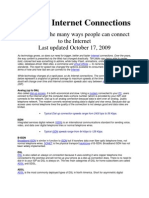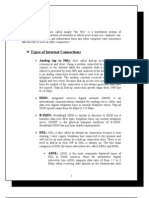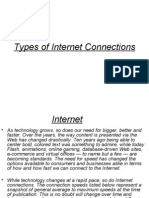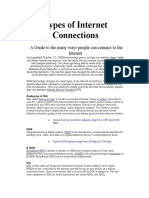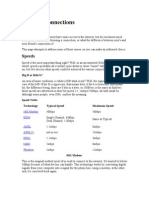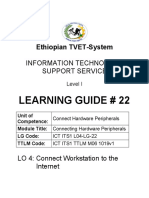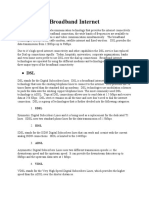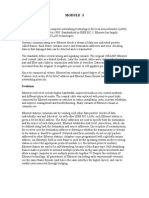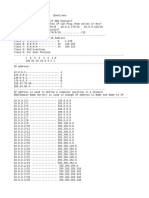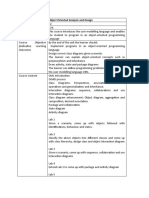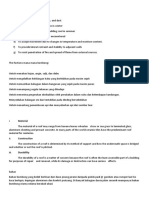0% found this document useful (0 votes)
82 views5 pagesIT Related Questions
The document provides an overview of different types of internet connections including analog, DSL, cable, wireless, T1/T3 lines, fiber optic and satellite. It describes the key features and typical speed ranges for each connection type. Fiber optic cables carry light signals and have advantages over copper cables including higher speeds and bandwidth as well as being less susceptible to interference.
Uploaded by
Juma PaimanCopyright
© © All Rights Reserved
We take content rights seriously. If you suspect this is your content, claim it here.
Available Formats
Download as DOCX, PDF, TXT or read online on Scribd
0% found this document useful (0 votes)
82 views5 pagesIT Related Questions
The document provides an overview of different types of internet connections including analog, DSL, cable, wireless, T1/T3 lines, fiber optic and satellite. It describes the key features and typical speed ranges for each connection type. Fiber optic cables carry light signals and have advantages over copper cables including higher speeds and bandwidth as well as being less susceptible to interference.
Uploaded by
Juma PaimanCopyright
© © All Rights Reserved
We take content rights seriously. If you suspect this is your content, claim it here.
Available Formats
Download as DOCX, PDF, TXT or read online on Scribd
/ 5


